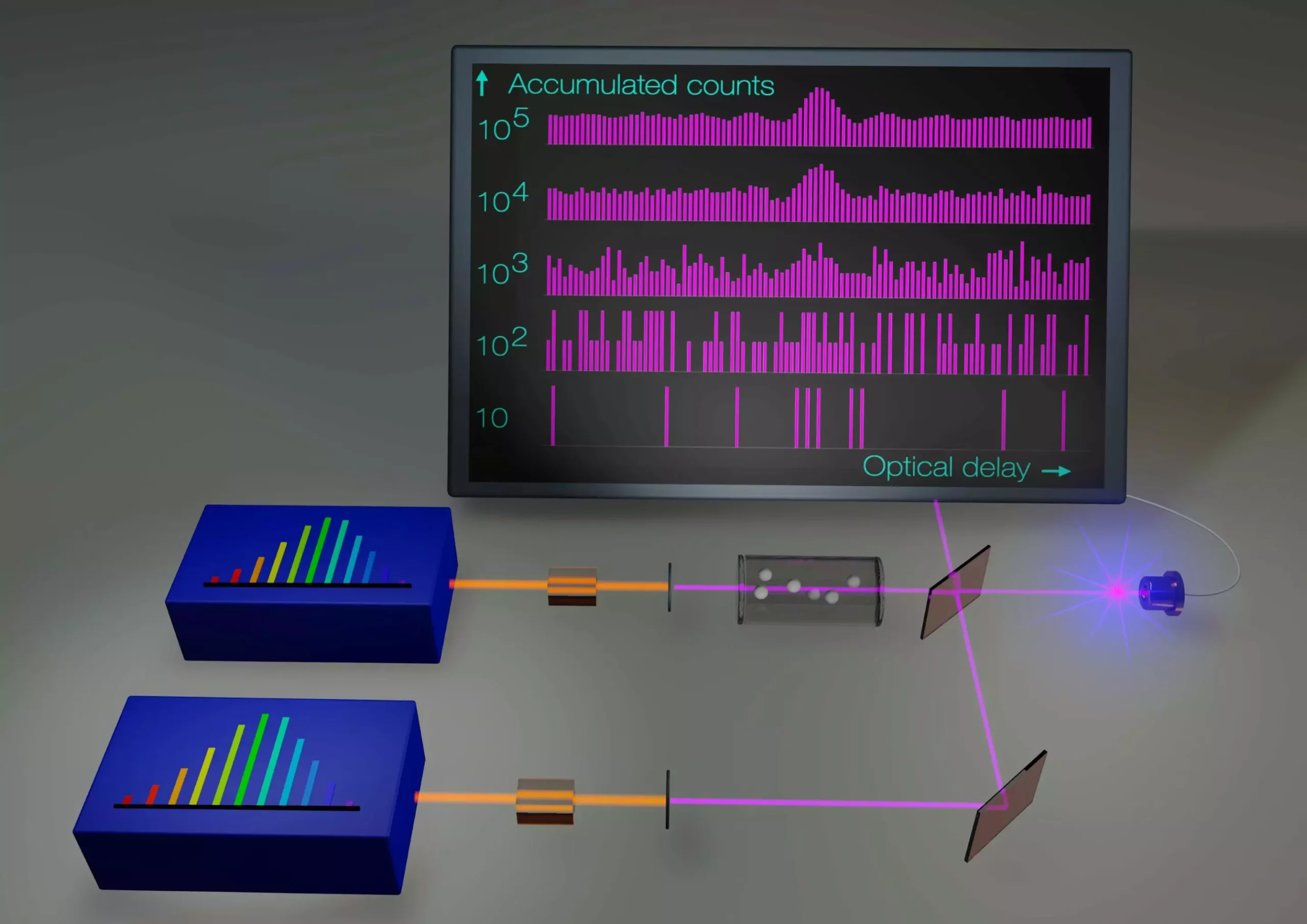Ultraviolet spectroscopy is a crucial tool in the study of electronic and rovibronic transitions in atoms and molecules. It is used in a variety of scientific fields, ranging from fundamental physics tests to precision measurements in atmospheric chemistry and astrophysics. Recently, a team of scientists at the Max-Planck Institute of Quantum Optics has made a significant advancement in the field of ultraviolet spectroscopy by successfully implementing high-resolution linear-absorption dual-comb spectroscopy in the ultraviolet spectral range.
Dual-comb spectroscopy is a powerful technique that allows for precise spectroscopic measurements over broad spectral bandwidths. Traditionally used for infrared linear absorption, this technique relies on the interference between two frequency combs with slightly different repetition frequencies. These frequency combs act like rulers, enabling precise frequency measurements. While traditional spectrometers have geometric limitations, dual-comb spectroscopy offers great potential for high precision and accuracy.
One of the limitations of dual-comb spectroscopy has been the requirement for intense laser beams, making it less suitable for scenarios with low light levels. However, the MPQ team has successfully demonstrated that dual-comb spectroscopy can be effectively used in starved-light conditions at power levels significantly weaker than typically required. By developing photon-level interferometers and optimizing the use of available light, the researchers have paved the way for utilizing this technique in challenging scenarios where low light levels are critical.
The researchers at MPQ have addressed challenges in generating ultraviolet frequency combs and building dual-comb interferometers with long coherence times. By precisely controlling the mutual coherence of comb lasers at extremely low power levels, they have demonstrated optimal counting statistics over extended periods. This breakthrough opens up the possibility of extending dual-comb spectroscopy to even shorter wavelengths, enabling precise vacuum- and extreme-ultraviolet molecular spectroscopy over broad spectral spans.
The development of ultraviolet dual-comb spectroscopy at short wavelengths represents a significant advancement in the field. This breakthrough allows for precise spectroscopic measurements in low-light conditions, unlocking novel applications in precision spectroscopy, biomedical sensing, and environmental atmospheric sounding. The research conducted by the MPQ team has extended the full capabilities of dual-comb spectroscopy, making it a realistic goal for future applications.
The recent breakthrough in ultraviolet dual-comb spectroscopy by the Max-Planck Institute of Quantum Optics represents a significant advancement in the field. By overcoming the challenges of low-light conditions and optimizing the use of available light, the researchers have paved the way for novel applications in precision spectroscopy. This breakthrough opens up new possibilities for scientific and technological advancements in the field of ultraviolet spectroscopy.


Leave a Reply